
30 INCH GRILL HEADS
ASSEMBLY & OPERATING INSTRUCTIONS
OUTLAW LONESTAR SELECT ANGUS
MODEL #26038 (L.P.) MODEL #87048 (L.P.) MODEL #47628 (L.P.)
MODEL #26039 (N.G.) MODEL #87049 (N.G.) MODEL #47629 (N.G.)
USA EDITION

1
TABLE OF CONTENTS PAGE #
SAFETY INSTRUCTIONS…………………………...…………………………………………………….……………………….………………………….2
THE LOCATION FOR YOUR GRILL ......................................................................................................................................................................... 2
CHECKING FOR GAS LEAKS .................................................................................................................................................................................. 2
NATURAL GAS SAFETY .......................................................................................................................................................................................... 3
PROPANE GAS SAFETY .......................................................................................................................................................................................... 4
INSTALLATION INSTRUCTIONS………………………………………………………………………………………….………………….……...............5
GRILL LOCATION ..................................................................................................................................................................................................... 5
GRILL VENTILATION ................................................................................................................................................................................................ 6
CONNECTING TO GAS SOURCE ........................................................................................................................................................................... 7
OUTDOOR NATURAL GAS GRILL INSTALLATION SPECIFICATIONS ................................................................................................................. 8
OUTDOOR PROPANE GAS GRILL INSTALLATION SPECIFICATIONS ................................................................................................................ 9
LP GAS TANK RETENTION.................................................................................................................................................................................... 10
TRANSFORMER ..................................................................................................................................................................................................... 11
INSPECTING / CLEANING BURNERS AND GAS VALVE ORIFICES…………….….…….…….……………….……….……....….………............12
BURNER CLEANING .............................................................................................................................................................................................. 12
BURNER SHUTTER CLIP INSPECTION / ADJUSTMENT .................................................................................................................................... 12
BURNER REPLACEMENT INTO INSERT .............................................................................................................................................................. 13
IGNITOR / ELECTRODE CHECK ........................................................................................................................................................................... 13
BURNER OPERATION CHECK .............................................................................................................................................................................. 14
FIRST USE OR NEW SEASON GUIDELINES………………………………………………………………………………………………………………15
COOKING COMPONENT INSTALLATION………………………………………………………………………………………………………………….15
LIGHTING PROCEDURES ..................................................................................................................................................................................... 16
OPERATING PROCEDURE ................................................................................................................................................................................... 17
COOKING TEMPERATURES ................................................................................................................................................................................. 17
ROTISSERIE COOKING……………………………………………………………………….….…….……………………. ….……………….…...........18
ROTISSERIE COOKING WITH INDRECT HEAT… ............................................................................................................................................... 18
LIGHT BULB REPLACEMENT ................................................................................................................................................................................ 19
LIGHT SYSTEM WIRING DIAGRAM ......................................................................................................................................................................
20
CLEANING & MAINTENANCE ............................................................................................................................................................................... 21
TROUBLESHOOTING………………………………................................................................................................................................................22
IF GRILL FAILS TO OPERATE PROPERLY ……………………………………………………………………………………………………………….23
SERIAL NUMBER LOCATIONS ............................................................................................................................................................................ 23
YELLOW FLAME AND FLASH BACK ................................................................................................................................................................... 23
HOW TO REGISTER YOUR GRILL OR ORDER REPLACEMENT PARTS… ........................................................................................................ 24
OUTLAW PARTS LIST AND REFERENCE DRAWING ....................................................................................................................................... 25
LONESTAR SELECT PARTS LIST AND REFERENCE DRAWING .............................................................................................................. ……26
ANGUS PARTS LIST ............................................................................................................................................................................................. 27
ANGUS EXPLODED ILLUSTRATION ................................................................................................................................................................... 28
ROTISSERIE PARTS LIST AND EXPLODED ILLUSTRATION ............................................................................................................................ 29
LIMITED WARRANTY POLICY .............................................................................................................................................................................. 30
READ THIS ENTIRE MANUAL CAREFULLY AND RETAIN FOR FUTURE REFERENCE.
BE SURE YOUR GRILL IS PROPERLY INSTALLED, ASSEMBLED AND CARED FOR. FAILURE TO FOLLOW THESE INSTRUCTIONS MAY RESULT IN SERIOUS BODILY INJURY
AND/OR PROPERTY DAMAGE. IF YOU HAVE QUESTIONS CONCERNING ASSEMBLY OR OPERATION, CONSULT YOUR DEALER, GAS APPLIANCE SERVICE
REPRESENTATIVE OR YOUR GAS COMPANY.
-
NOTE TO INSTALLER: LEAVE THESE INSTRUCTIONS WITH THE CONSUMER AFTER INSTALLATION.
-
NOTE TO THE CONSUMER: RETAIN THESE INSTRUCTIONS FOR FUTURE REFERENCE.
-
THIS OUTDOOR COOKING GAS APPLIANCE IS NOT INTENDED TO BE INSTALLED IN OR ON RECREATIONAL VEHICLES AND/OR BOATS.
*FOR WARRANTY PURPOSES, PLEASE RECORD YOUR MODEL NUMBER, SERIAL NUMBER, DATE OF PURCHASE & A COPY OF YOUR RECEIPT OR INVOICE IN THE BACK
OF YOUR MANUAL ON PAGE 30.
Version 5.5

2
SAFETY INSTRUCTIONS
BEWARE OF SPIDERS CAUTION: BURNERS MUST BE INSPECTED AND CLEANED BEFORE FIRST USE.
Spiders and small insects occasionally spin webs or make nests in the burners during warehousing, transit and/or after long periods of non- use.
These webs can lead to a gas flow obstruction, which could result in a fire in and around the burner tubes. This type of fire is known as “FLASH-
BACK” and can cause serious damage to your grill and create an unsafe operating condition for the user. Although an obstructed burner tube is
not the only cause of “FLASH BACK” it is the most common cause, and frequent inspection and cleaning of the burners is necessary.
WARNING! FOR YOUR SAFETY, FOLLOW THE GUIDELINES BELOW:
PLEASE NOTE: YOUR GAS GRILL IS ONLY FOR OUTDOOR USE.
PROTECT CHILDREN: DO NOT ALLOW CHILDREN TO OPERATE GRILL. KEEP THEM AWAY FROM THE GRILL DURING USE, AND UNTIL THE GRILL
HAS COOLED COMPLETELY.
DO NOT USE YOUR GAS GRILL IN GARAGES, PORCHES, BREEZEWAYS, SHEDS OR OTHER ENCLOSED AREAS.
DO NOT PLACE GRILL UNDER OR ON TOP OF ANY SURFACE THAT WILL BURN.
DO NOT ALLOW OBSTRUCTION TO THE FLOW OF COMBUSTION AND VENTILATION AIR AROUND THE GRILL HOUSING.
GRILL CLEARANCE FROM THE BACK AND SIDE OF ANY COMBUSTIBLE SURFACE MUST BE AT LEAST 21 INCHES
DO NOT store or use gasoline, or other liquids emitting flammable vapours in the vicinity of grill or any other appliances.
DO NOT store empty or full spare LP gas cylinders and/or chemicals under or near grill or any other appliances.
Keep the fuel hose and electrical cord away from hot surfaces and dripping grease.
Check and clean burner venturi tubes for insects and debris. A clogged tube can lead to a fire beneath the grill. Keep the vent openings of the cylinde
r
enclosure free and clear from debris.
Clean outdoor cooking gas appliance with recommended cleaning agents.
Avoid unnecessary twisting of the hose. Visually inspect the hose prior to each use for cuts, cracks, excessive wear or other damage and replace
if necessary.
NEVER light grill with lid closed or before checking to ensure burner tubes are fully seated over gas valve orifices.
NEVER lean over cooking surface while lighting grill. Use barbecue tools with wood handles and good quality insulated oven mitts when
operating grill.
DANGER! IF YOU SMELL GAS, FOLLOW THE GUIDELINES BELOW:
1) Visually check burner flame status, and pilot burner flame if provided.
2) NEVER test for gas leaks with a lighted match or open flame.
3) Shut off gas source to the appliance.
4) Extinguish any open flame.
5) Open grill lid to release any accumulation of fumes.
6) If gas odour persists, immediately contact your gas supplier or your fire department.
CHECKING FOR GAS LEAKS NEVER TEST FOR GAS LEAKS WHILE THE GRILL IS LIT!
It is a must that you use the steps below to check for leaks on Natural Gas or LP Gas Grills prior to first use, start of a new BBQ season and
whenever the gas cylinder is changed on LP Gas Grills.
1) Turn off heat control valve(s), and then turn on gas at source.
2) Make a soap solution by mixing one-part liquid detergent and one-part water.
3) Apply the soap solution to all gas connections: bubbles will appear in the soap solution if connections are not properly sealed. Tighten
or repair as necessary.
4) If you have a gas leak that you cannot repair, turn off the gas at the source, disconnect fuel line from the grill and immediately call your
grill dealer and gas supplier for professional assistance.
WARNING: If these guidelines are not followed, fire causing serious injury or death may occur.

3
NATURAL GAS (NG) SAFETY OPERATING SPECS
Your Natural Gas (G20) grill is designed to use natural gas ONLY. The grill operates at a pressure of 4” water column (wc) or 10 mbar
set at the natural gas regulator attached at the back of the grill. Prior to installing gas supply lines, check with your local gas utility or
municipality regarding local gas pressure and for building code requirements and instructions or consult a licensed and knowledgeable
installer.
GAS PLUMBING GUIDELINES:
1) Install an “ON-OFF” shutoff valve for OUTDOOR gas supply source after gas line piping exits outside wall, or before gas piping enters
ground.
2) Install an “ON-OFF” shutoff valve for INDOOR gas supply source to the branch fuel line in an accessible location near the supply line.
3) Do not use Teflon ® tape or pipe sealant on any flare ends because you will not obtain a leak-free seal.
4) Use only Pipe sealing compound or pipe thread tape of the type resistant to the action of natural gas to at least the first three threads of
all male pipe threads when making the connection.
5) Disconnect your gas grill from fuel source when the gas supply is being tested at high pressures. This appliance and its individual
shutoff valve must be disconnected from the gas supply piping system during any pressure testing of that system at pressures in
excess of 1/2 psig or 37 mbar.
6) Turn off your gas grill when the gas supply is being tested at low pressures. This appliance must be isolated from the gas
supply piping
system by closing its individual valve.
LIQUID PROPANE (LP) SAFETY OPERATING SPECS
Your Propane gas (G31) grill is designed to operate on propane gas ONLY, at a pressure regulated at 11” water column (wc.) or 27.4
mbar when equipped with the correct propane orifices on the valves and a propane regulator on the supply line.
Your propane gas grill is designed to be used with a standard 20 lb gas cylinder. In the United States, the LP gas cylinder must be
constructed and marked in accordance with specifications of the US Department of Transportation for Propane Gas Cylinders.
1) Always keep LP gas cylinder securely fastened in an upright position.
2) Never connect an unregulated LP gas cylinder to the grill.
3) Do not subject LP gas cylinders to excessive heat.
4) Do not fill LP gas cylinder beyond 80% full.
CAUTION: Never store LP gas cylinders inside a building or in the vicinity of any gas-burning appliance.
WARNING: When the outdoor cooking gas appliance is not in use:
1) The LP gas must be turned off at the supply cylinder. Storage of an outdoor cooking gas appliance indoors is permissible only if the
cylinder is disconnected and removed from the outdoor cooking gas appliance.
2) Spare LP gas cylinders must be stored outdoors, out of reach of children and must not be stored in a building, garage or any other
enclosed area.
3) The LP gas cylinder must be equipped with an arrangement for vapor withdrawal.
4) The LP gas cylinder must include a collar to protect the cylinder valve.
5) Do not store spare LP gas cylinders under or near this appliance.
Place dust cap on cylinder valve outlet whenever the cylinder is not in use. Only install the type of dust cap on the cylinder valve
outlet that is provided with the cylinder valve. Other types of caps or plugs may result in leakage of propane.
WARNING:
Gas valves are pre-set at the Bull factory to operate on LP Gas or Natural Gas. If you wish to convert to a different gas type,
other than LP or NG, be sure to contact your grill dealer, licensed plumber or authorized service center for further details.
Conversion kits are not sold to the general public and require a professional to perform service. Failure to properly convert a
unit can cause serious injury to yourself and/or others, irreparable damage to your grill and void of warranty.
WARNING: IF THESE GUIDELINES ARE NOT FOLLOWED, FIRE CAUSING SERIOUS INJURY OR DEATH MAY OCCUR.

4
INSTALLATION INSTRUCTIONS
In the United States your gas grill must be installed in accordance with local codes or, per the latest edition of the National Fire
Prevention Association NFPA 54/ANSI (Z223.1)
In Canada, your gas grill must be installed in accordance with local codes or, per the latest
edition of the Canadian Standards Association Code CGA B149.2 for Natural Gas and Propane Installation
of Gas Burning Appliances and Equipment
Your Built-in Gas Grill comes to you fully assembled. We strongly recommend professional installation and hook up of the Gas BBQ
grill. These instructions will provide you with the measurements necessary for you or your builder to construct a masonry structure for
your outdoor gas grill.
NOTES TO INSTALLER:
1) Leave these instructions with the consumer for future reference.
2) The grill must be installed in accordance with all local building codes.
3) Do not use any combustible materials for this construction.
4) Minimum horizontal clearance to adjacent combustible surface from side and back of the grill must be 21 inches.
5) Provide 6 inches of clearance behind grill to allow front portion of hood to open and for ventilation purposes.
6) Please remove the cotter pins from the burners before installing unit into an island. See page 12 for cotter pin removal.
LIQUID PROPANE TANK STORAGE AREA MUST BE ISOLATED FROM GRILL AND VENTED.
PLEASE READ THESE INSTRUCTIONS BEFORE INSTALLING YOUR GAS GRILL

5
GRILL VENTILATION INSTRUCTIONS
1) Upper and lower level vents must be provided for combustion air on both sides of built-in cabinet. Vents on Grill insert must remain
unobstructed to allow for combustion air and ventilation.
2) Upper vents must be located within 5 inches from the top of the island enclosure to the bottom of the vent.
3) Lower vents must be located within 1 inch from the bottom of the island enclosure to the bottom of the first vent openings and no
more than 5 inches from the bottom of the island enclosure to the top of the vent.
4) The upper vents must have openings that have a total free area of not less than 1 sq. inch per lb of stored fuel capacity per vent.
5) The lower vents must have openings that have a totally free area of not less than 1/2 sq. inch per lb of stored fuel capacity per vent.
6) Both upper and lower vent openings must have minimum dimensions to permit the entrance of a 1/8-inch diameter rod. The
minimum area of the upper vent must be 20 square inches, while the minimum area of the lower vent must be 10 square inches.
7) Upper and lower vents must be on both left and right sides of cabinet per drawing detail below. Use Wall Opening dimensions in
detail show below to install BBQ grill that rests on the side and back edges of the BBQ insert.

6
INSTALLATION INSTRUCTIONS (CONT.)
CONNECTING TO GAS SOURCE
Refer to the following instructions and illustrations for typical gas supply connections.
We strongly suggest professional installation and hook-up of the Gas BBQ.
IMPORTANT: Before connecting grill to gas source, make sure BBQ Grill control knobs are in “OFF” position.
Be sure to follow instructions for connecting an appliance to a fixed fuel piping system specifying the use of a rigid pipe, semi-rigid tubing,
and/or a connector that complies with the Standard for Connectors for Outdoor Gas Appliances and Manufactured Homes, ANSI Z21.75 For
post-mounted outdoor cooking gas appliances, in-ground metallic posts shall be protected against corrosion as warranted by soil conditions. A
suitable coating of corrosion protection will retard the effects of corrosion and help your Bull purchase last longer.
NATURAL GAS CONNECTIONS
IMPORTANT: Bull Outdoor Products does not recommend the use of any quick connect fittings or lines to the unit. Use of these types of fittings
or lines could cause low gas flow and greatly reduce the performance of the unit.
1) Do not use Teflon ® tape or pipe sealant on any flare ends because you will not
obtain a leak-free seal.
2) Remove plastic cap from regulator installed on grill.
3) Attach stainless steel flex line 3/8” flare-female end to the regulator.
4) Attach the other end of flex line to shut-off valve through a nipple.
5) Attach a shut-off valve to gas supply pipe.
PERFORM GAS LEAK CHECK – REFER TO PAGE 2
PROPANE GAS CONNECTIONS
CAUTION: Changing the gas tanks must be done away from any source of ignition.
LP Gas Tank must be marked in accordance with the Specifications for LP Gas Cylinders, Spheres and Tubes for Transportation of Dangerous
Goods and Commission LP Gas Tank connection device is compatible with outdoor cooking appliances.
1) LP Gas Tank has appropriate vapor withdrawal.
2) LP Gas Tank must include a collar to protect the cylinder valve.
3) LP Gas Tank uses a type 1 tank valve that is firmly secured in an upright position.
4) LP Gas pressure regulator and hose assembly supplied with this unit must be used without alteration and must be less than 59
inches in length.
5) If the hose assembly needs to be replaced, use only the type 1 specified in the parts list supplied with this unit.
6) To connect, turn the black coupling nut of the hose and regulator assembly in a clockwise direction (see illustration below) until it is
completely threaded onto the cylinder valve before turning gas supply on.
7) LP Gas Tank must have a listed overfilling prevention device
.
TO PERFORM GAS LEAK CHECK – REFER TO PAGE 2

7
OUTDOOR INSTALLATION SPECIFICATIONS FOR MODELS
#26039, #87049 & #47629 USING NATURAL GAS (NG)
NOTE:
1) Vents must be provided for combustion air and ventilation on both sides of built-in cabinet.
2) When choosing a location for your gas grill, keep in mind that it should never be located under any overhead combustible
construction.
3) The sides and back of the grill should not be any closer than 21 inches to combustible construction.
DO NOT
1) Store empty or full spare tanks under or near this or any other appliance.
2) There must be a minimum of 6 inches counter space behind the grill in order to allow the grill hood to clear properly.

8
OUTDOOR INSTALLATION SPECIFICATIONS FOR
LIQUID PROPANE (LP) MODELS #26038, #87048 AND #47628
NOTE:
1) Vents must be provided for combustion air and ventilation on both sides of built-in cabinet.
2) When choosing a location for your gas grill keep in mind that it should never be located under any overhead combustible
construction.
3) The sides and back of the grill should not be any closer than 21 inches to combustible construction.
4) DO NOT store empty or full spare tanks under or near this or any other appliance.
5) There must be a minimum of 6 inches counter space behind the grill in order to allow the grill hood to clear properly.
6) The cylinder valve on the tank must be readily accessible for hand operation.
7) The tank must be isolated enough to where it is shielded from radiation, open flames and protected from foreign matter such as hot
drippings.
8) There must be access so the tank can be connected, disconnected, inspected and leak tested outside of the cabinet. As well access
so that connections which could be disturbed when installing the tank in the cabinet can be leak tested inside the cabinet.
9) The connectors must comply with ANSI Z21.75 CSA 6.27 standard for Connectors used on Outdoor Gas Appliances and
Manufactured Homes to be suitable for outside installation.
10) The maximum length of the connection shall be 6 ft from stub.
11) Please ensure visibility of the connector and directions for the piping, flexible tubing and gas connector within enclosure.

9
LP GAS TANK RETENTION
LP tank must be properly secured within the structure to prevent being knocked over.
The tank retention system must be securely fastened to the bottom of the island with the use of bolts, washers.
There must be a minimum clearance of 2 inches between the floor and the cylinder enclosure.
Once secured, place the LP tank in the tank retention system and tighten the tank retention bolt until the tank is held securely.
WARNING:
Do not store a spare or disconnected LP gas cylinder under or near this barbecue.
A dented or rusty LP gas cylinder may be hazardous and should be check by your LP gas provider.
Do not use a LP gas cylinder with a damaged valve.

10
TRANSFORMER
NOTE
:
In order to ensure transformer and interior light system longevity, the transformer must be installed at least 6 inches above
the ground. The transformer may be attached to your island material using metal screws. To install your transformer, secure
two screws (not provided) through the designed mounting tabs (see illustration below).

11
INSPECTING AND CLEANING BURNERS AND GAS VALVE ORIFICES
Following the instructions below at least once a month, or if Grill has not been used for an extended period.
To reduce the chance of FLASHBACK, the procedures below should be followed.
SAFETY INSTRUCTIONS PRIOR TO CLEANING YOUR GRILL
Always turn off the gas supply prior to cleaning your grill.
Gas control knobs should be in the “OFF” position
Fuel line should be disconnected from gas valve manifold.
Do not use water or any liquids to clean your burners.
BURNER CLEANING AND INSPECTION INSTRUCTIONS:
1) Remove cotter pin from cast peg before carefully lifting burner from the gas valve orifice (See drawing below).
2) Use a narrow bottlebrush with a flexible handle to clean the burner tube and burner.
3) Wire brush entire outer surface of burner to remove food residue, dirt or loose corrosion
.
4) Bend a stiff wire (a light-weight coat hanger works well) into a small hook as shown.
5) Clean the horizontal slot and un-clog the burner ports with a stiff wire or open paper clip.
6) Inspect the burner for damage (cracks or holes) for any openings caused by corrosion. If such damage is found, order and install a new burner.
7) After installation, check to ensure the gas valve orifices are correctly placed inside ends of burner tubes.
BURNER SHUTTER CLIP INSPECTION / ADJUSTMENT
The burners are set to a factory setting; however, the air to fuel mixture may need to be adjusted to accommodate different gas pressures. In order to adjust the air to
fuel mixture, loosen the screw and rotate the shutter clip to the appropriate setting (see diagrams below). Tighten the screw and repeat adjustment procedure to the
remaining burners. This should improve burner efficiency.

12
INSPECTING AND CLEANING BURNERS AND GAS VALVE ORIFICES, (CONTINUED)
BURNER REPLACEMENT INTO INSERT
CAUTION – Always turn off the gas supply prior to cleaning your grill.
Replace burner back into the grill insert. There is no need to replace the cotter pin back into the cast peg, it is for shipping purposes only.
1) Check the burner for proper location after replacing.
2) Make sure the valve orifices are inside of the burner tubes (see drawing below). If the valve orifices do not fit inside the burner
tubes, lighting the burners may cause explosion and/or fire.
IGNITOR / ELECTRODE CHECK
To check each igniter individually for presence of spark at electrode use the following steps:
1) With all control knobs set to “OFF”, in turn, push each control knob in fully and turn slowly about a 1/4 turn to the left (counter-clockwise) until a click
is heard; the trigger hitting the strike block should produce a blue spark at the electrode tip.
2) Return control knob to “OFF” before checking next igniter.

13
INSPECTING AND CLEANING
BURNERS AND GAS VALVE ORIFICES (CONTINUED)
BURNER OPERATION CHECK
NOTE:
Upon first assembly, the gas lines and burners will be full of air. For the burners to light properly, the lines must fill with gas.
It may require several attempts at lighting the burners before you are successful.
1)
With BBQ Grill control knobs in “OFF” position, turn on the Gas supply.
2) Light any burner by pushing its control knob in fully and slowly (3 to 4 seconds) turning it about 1/4 turn to the left (counter clockwise) until a click
is heard. The 3 to 4 second duration should provide enough gas to light the burner. If the burner does not light, immediately return the control knob
to “OFF”, wait several minutes for the gas to disperse, and repeat the process. After burner lights successfully, turn control knob to “OFF”.
3) Repeat process for each control knob/igniter, in turn, ensuring that other knobs are in “OFF” position as you perform each check.
4) If any burners fail to light after several attempts, discontinue gas supply at source and re-inspect for obstructions to gas flow and orifices.

14
FIRST USE OR NEW SEASON GUIDELINES
IMPORTANT: Before first use and at the beginning of each barbecue season:
1) Wash flame tamers, cooking grids, and warming rack with warm, soapy water.
2) Rinse and dry thoroughly.
3) Season metal surfaces with cooking oil and occasionally throughout the season.
4) After cooking is completed, turn grill to high setting for NO MORE THAN five minutes to burn off excess grease or food residue.
CAUTION: DO NOT LEAVE GRILL UNATTENDED DURING USE.
DO NOT RUN GRILL FOR MORE THAN 10 MINUTES BEFORE FIRST USE
COOKING COMPONENT INSTALLATION
PER DRAWING BELOW:
1) Place stainless steel heat shields on lowest ledge under / between burners in grill insert.
2) Place stainless steel flame tamers on lower ledge above burners in grill insert.
3) Place cooking grates in grill insert on ledge above flame tamers.
4) Please read Safety, Lighting and Operating Instructions carefully.
5) Check gas valve orifices, burner tubes and burner ports for any obstructions.
NOW YOUR GAS GRILL IS READY TO USE!

15
WARNING: NEVER OPERATE ROTISSERIE BURNER WITH MAIN BURNER(S) “ON”
WARMING RACK MUST BE REMOVED WHEN OPERATING THE ROTISSERIE BURNER
GRILL LIGHTING PROCEDURE
LIGHTING MAIN BURNER(S):
1) Become familiar with the safety guidelines at the front of the manual.
DO NOT SMOKE WHILE LIGHTING GRILL OR CHECKING GAS SUPPLY CONNECTIONS!
2) If your grill fuel source is LP, check the gas cylinder to see if it’s full.
3) Check that the end of each burner tube is properly located over each valve orifice.
4) Make sure all gas connections are securely tightened.
TEST FOR LEAKS WITH A SOAP SOLUTION, NEVER WITH A FLAME. (Gas Leak Check instructions are on page 2).
5) Always open lid before lighting.
6) Set ALL BBQ Grill control knobs to “OFF” and open gas supply, LP cylinder or Natural Gas Valve.
7) Ignite only the burners you intend to use, using the same method for each as follows:
• Push in control knob completely and rotate slowly (3 to 4 seconds) about 1/4 turn to the left (counter clockwise) until a click is heard.
The 3 to 4 second duration should provide enough gas to light the burner.
• If the burner does not light, immediately return the control knob to ‘OFF’, wait several minutes for the gas to disperse, and repeat the
process.
• After burner ignites, repeat procedure with any other burner needed.
8) Adjust control knob(s) to desired cooking temperature.
NOTE: If igniters fail to produce a spark at the electrode tip, burners can be manually lit with a fireplace-type match.
NOTE: To light gas grill with a fireplace-type match, follow steps 1 through 6 above. Remove cooking grid and flame tamer from burner you wish
to light. Insert lighted fireplace-type match or long-necked butane lighter placing flame near to burner ports. Press in control knob and rotate left to
“HIGH” setting to release gas. Burner should light immediately. If more than one burner is needed, repeat procedure with each burner.
Replace flame tamer and cooking grid. Turn off burners not in use and adjust other burners to desired cooking temperature.
LIGHTING ROTISSERIE BURNER FOR ANGUS MODELS #47628 & #47629:
The rear infrared rotisserie burner allows for slow rotisserie cooking of meats and poultry. Infrared burners radiate heat onto the outer surface of the
food. This allows cooking without the grease drippings burning on the flame tamers.
TO LIGHT ROTISSERIE BURNER:
1) CAUTION: Always open lid before lighting.
2) Set ALL BBQ Grill control knobs to “OFF” and open gas supply, LP cylinder or Natural Gas Valve.
3) The rotisserie control knob is located at the middle of the Control Panel. Push in control knob completely and rotate slowly (5 to 10 seconds) about
1/4 turn to the left (counter clockwise) until a click is heard. The 5 to 10 second duration should provide enough gas to light the burner. If the burner
does not light, immediately return the control knob to “OFF”, wait several minutes for any accumulated gas to clear out of the grill.
4) Keep lid closed and operate burner at the “ON” position when using rotisserie.
TO LIGHT ROTISSERIE BURNER WITH A FIREPLACE-TYPE MATCH, Follow steps 1 & 2 above. Carefully insert lighted fireplace-type match or long-necked butane
lighter placing flame near to the Ceramic Panel. Press in control knob and rotate left (counter clockwise) to “HIGH” or “ON” setting to release gas. Burner should light
immediately.
NOTE: Rotisserie burner may take a few attempts to ignite.
DO NOT ATTEMPT TO REGULATE THE ROTISSERIE BURNER BY USING THE CONTROL KNOB.
THIS CONTROL HAS A FIXED SETTING AND IS NOT ADJUSTABLE.

16
OPERATING PROCEDURE
BURN OFF: Before cooking on your gas grill for the first time, burn the grill to get rid it of any odours or foreign matter by igniting the burners, closing
the lid, and operating at “HIGH” setting for about five minutes. You may then either set the controls to “OFF” or cook on your grill immediately by
turning the control knobs to a lower setting
.
NOTE: Initially, the Ceramic Panel will have a blue flame. After some time, the color of the flame and Ceramic Panel will be orange.
This may not be evident in bright daylight.
CAUTION:
1) DO NOT LEAVE GRILL UNATTENDED WHILE IN USE.
2) It is recommended you use protective gloves to operate the grill when handling any components with transferred heat temperature.
Do not move the appliance when it is in use.
3)Turn off the gas supply at the gas supply source after usage.
WARNING: ANY MODIFICATION OF THE APPLIANCE MAY BE DANGEROUS TO YOU OR OTHERS AND MAY VOID PRODUCT
WARRANTY
COOKING TEMPERATURE SETTINGS
HIGH SETTING Use this setting only for fast warm-up, for searing steaks and chops, and for burning food residue from the cooking
grids after the cookout is over.
MEDIUM SETTING Use this setting for most grilling, roasting or baking, and for cooking hamburgers and
vegetables.
LOW SETTING Use this setting for all smoke cooking, rotisserie cooking, and when cooking very lean cuts such as fish.
NOTE: These temperatures vary with the outside temperature and the amount of wind.
PRE-HEATING:
It is necessary to preheat the grill for a short time before cooking certain foods, depending on the type of food and the cooking
temperature. Food that requires a high cooking temperature needs preheat for five minutes; food that requires a lower cooking
temperature needs only a period of two to three minutes. There is no need to preheat for casseroles or other foods that require slow
cooking.

17
ANGUS MODELS # 47628 OR #47629
ROTISSERIE COOKING
Rotisserie is mostly used to cook large pieces of meat and poultry to assure slow, even cooking. The constant turning provides a self-
basting action, making food cooked on a rotisserie exceptionally moist and juicy. Rotisserie cooking generally requires 1 ½ to 4½ hrs to
cook depending on the size and type of meat being cooked
.
WARNING: NEVER OPERATE ROTISSERIE BURNER WITH MAIN BURNER(S) “ON” WARMING RACK MUST BE REMOVED
WHEN OPERATING THE ROTISSERIE BURNER
TO INSTALL THE MOTOR BRACKET, Remove the two (2) end screws on the grill closest to the front. Place bracket on top of grill lip
and replace screws (see drawing below). Bracket can be installed on either side of the unit.
NOTE:
Ensure that meat (20 lbs maximum) is placed in a balanced position on rotisserie spit rod while rotating to clear grill and avoid
unnecessary strain on the rotisserie motor before lighting infrared burner using instructions below:
1) The trolley thumb screw should be located on the inside of the grill, screw the knurled nut on next, the counterweight is then added
and then screw on the black handle.
2) To adjust the counterweight, loosen the black handle and slide the counterweight up or down to properly position the weight of the
food being cooked. The purpose of the counterweight is to balance the rotation and prevent lopsided movement of the motor.
3) Since indirect heat is often used in cooking on a rotisserie, a foil or aluminium drip pan is advisable to prevent excessive flare-ups. If
more space is needed when using the rotisserie, remove the cooking grates and place the drip pan on the flame tamers. You may
wish to add beer, wine or water to pan.
NOTE: TO LIGHT INFRARED BURNER, TURN KNOB AND WAIT ABOUT 10 SECONDS TO ALLOW GAS TO GET TO BURNER
BEFORE
CLICKING IGNITION KNOB. ALWAYS LIGHT THE GRILL WITH THE HOOD IN AN OPEN POSITION!

18
ANGUS MODELS # 47628 OR #47629
ROTISSERIE COOKING WITH INDIRECT HEAT
Since indirect heat is often used in cooking on a rotisserie, a foil or aluminium drip pan is advisable to prevent excessive flare-ups.
Generally, the cooking grates are removed to allow for the swing of the rotisserie. A basting pan can be placed under the rotisserie
area on top of the flame tamer(s) to catch the drippings.
COOKING WITH INDIRECT HEAT (CON’T)
You can cook poultry and large cuts of meat slowly to perfection on one side of the grill by indirect heat from the next burner or with
infrared rotisserie burner. The heat from the lighted burner circulates gently throughout the grill, cooking the meat or poultry without any
direct flame beneath or below the food you are preparing. This method greatly reduces flare-ups when cooking extra fatty cuts, because
there is no direct flame to ignite the fats and juices that drip down during cooking. Place a drip pan slightly smaller than the cut of meat
on the cooking grids or flame tamer surface under the meat being cooked. This will allow you to catch meat juices for making gravy.
FLARE-UPS:
The fats and juices that drip from the meat cause flare-ups. Since flare-ups impart the distinctive taste and color to food cooked over an open flame,
they should be expected and encouraged within reason.
CAUTION: Uncontrolled flaring can result in a ruined meal. To control excessive flare-ups caused by too high a heat setting, turn the heat control
knob to a lower setting.
CAUTION: If burners go out during operation, close gas supply at source, and turn all gas valves off. Open lid and wait five minutes before
attempting to re-light (this allows accumulated gas fumes to clear).
CAUTION: Should a grease fire occur, close gas supply at source, turn off all burners and leave lid closed until fire is out. Do not use water or any
liquid to extinguish a grease fire.
CAUTION: Do not attempt to disconnect any gas fitting while your barbecue is in operation or while gas feed is on

19
LIGHT BULB REPLACEMENT
LONESTAR SELECT MODELS #87048 AND #87049
ANGUS MODELS #47628 AND #47629
WARNING: If light bulb(s) need to be replaced, make sure power is disconnected and grill and light bulbs are completely cool to the touch. Your
Grill uses G4 base 12-volt 5-watt bulbs.
Page is loading ...
Page is loading ...
Page is loading ...
Page is loading ...
Page is loading ...
Page is loading ...
Page is loading ...
Page is loading ...
Page is loading ...
Page is loading ...
Page is loading ...
-
 1
1
-
 2
2
-
 3
3
-
 4
4
-
 5
5
-
 6
6
-
 7
7
-
 8
8
-
 9
9
-
 10
10
-
 11
11
-
 12
12
-
 13
13
-
 14
14
-
 15
15
-
 16
16
-
 17
17
-
 18
18
-
 19
19
-
 20
20
-
 21
21
-
 22
22
-
 23
23
-
 24
24
-
 25
25
-
 26
26
-
 27
27
-
 28
28
-
 29
29
-
 30
30
-
 31
31
Bull LP 87048 Operating instructions
- Category
- Barbecues & grills
- Type
- Operating instructions
Ask a question and I''ll find the answer in the document
Finding information in a document is now easier with AI
Related papers
-
Bull 07429 Owner's manual
-
Bull ANGUS 47629CE Operating instructions
-
Bull NG 87002 Operating instructions
-
Bull 114686 Operating instructions
-
Bull NG #96001 Owner's manual
-
Bull NG 44001 Operating instructions
-
Bull 18249 NG Operating instructions
-
Bull LP 55000 Operating instructions
-
Bull 87048lp Operating instructions
-
Bull 47628 Operating instructions
Other documents
-
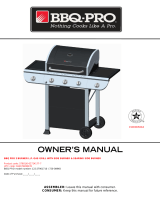 BBQ Pro 720-0894D Owner's manual
BBQ Pro 720-0894D Owner's manual
-
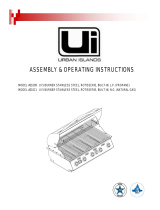 Urban Islands Stainless Steel 38″ Drop-in 5 Burner Grill User manual
Urban Islands Stainless Steel 38″ Drop-in 5 Burner Grill User manual
-
UI 5 Burner Grill Outdoor Natural Gas BBQ User manual
-
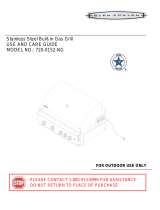 GLEN CANYON 720-0152-NG Owner's manual
GLEN CANYON 720-0152-NG Owner's manual
-
UI 5 Burner Grill Outdoor Natural Gas BBQ User manual
-
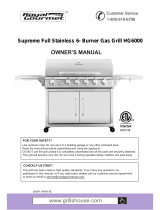 Royal Gourmet HG6000 Owner's manual
Royal Gourmet HG6000 Owner's manual
-
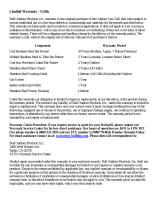 Bullet 98303 User manual
Bullet 98303 User manual
-
Perfect Flame PFISLP Template
-
Master Chef S405 Owner's manual
-
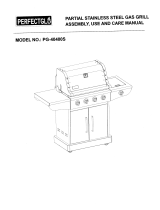 Perfectglo PG-40400S Owner's manual
Perfectglo PG-40400S Owner's manual




































